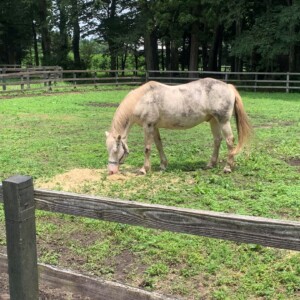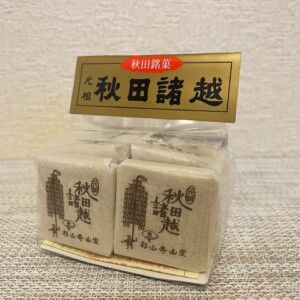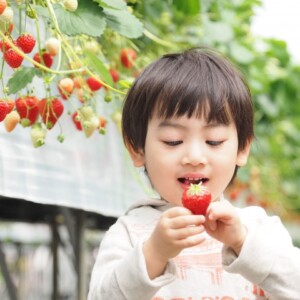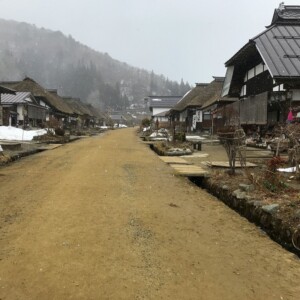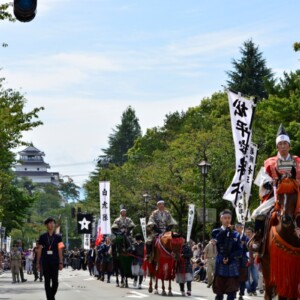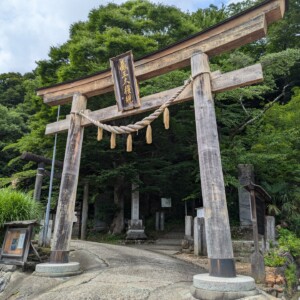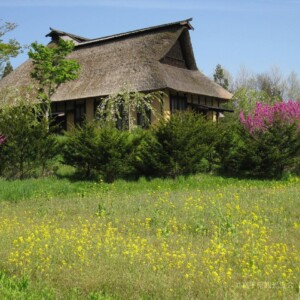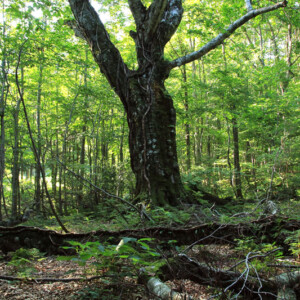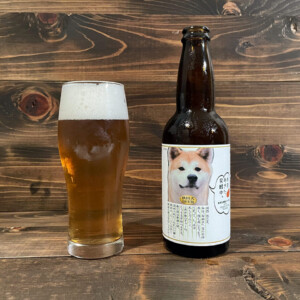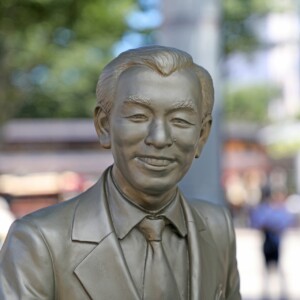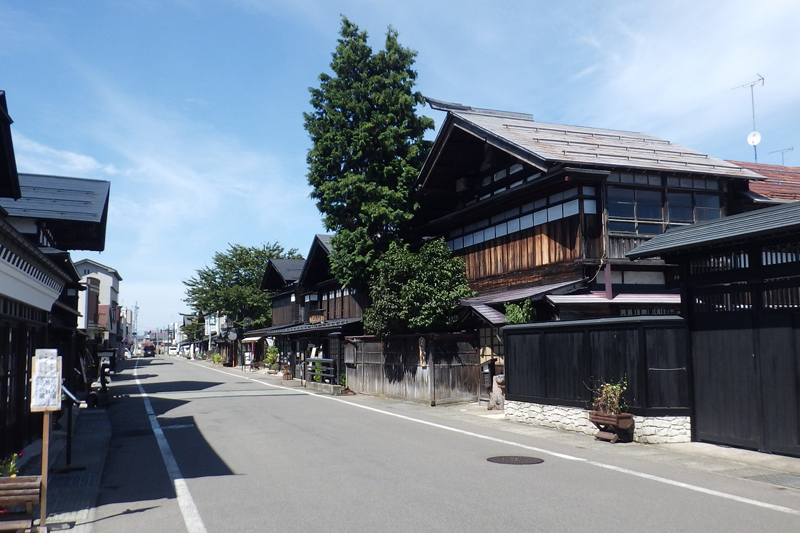
"Masuda-cho, Yokote City" is a preservation area lined with unique merchants with built-in houses [Akita Prefecture]
table of contents
- 1 A Masuda storehouse has a building built on the outside to protect it from snow.
- 2 Masuda developed as a distribution center in the Yokote Basin.
- 3 A market officially recognized by the Akita clan began in the Edo period.
- 4 During the Meiji period, the volume of transactions reached such a level that a bank was established in the town.
- 5 With the opening of the Ou Main Line, there was a shift from boat transportation to land transportation.
- 6 Preservation activities bring back the old townscape
- 6.1 Former Yukoma Sake Brewery (Shunsai Miso Chaya Kurao/National Registered Tangible Cultural Property)
- 6.2 Former Ishihira Hardware Store (Tourist Product Center "Kura-no-Eki")
- 6.3 Former Koizumi Gohei House (Sato Yosuke Shoten Lacquerware Museum/National Registered Tangible Cultural Property)
- 6.4 Sato Mataroku family (nationally designated important cultural property)
- 7 Request from Yokote City regarding tours of traditional houses
A characteristic of Masuda's townscape is that even though it is said to be a "kura town," you won't find anything that resembles a "kura" when you walk around the townscape. The street is lined with merchant houses from the Edo period to the early Showa period. It's a calm townscape that makes you feel like you've traveled back in time, but in general, there are almost always warehouses built behind or next to the stores facing the main street, but there are no warehouses in Masuda Town. I can see it. It is unimaginable that Masuda Town, which was once so prosperous, would not have a storehouse. So why are there so few storehouses?
A Masuda storehouse has a building built on the outside to protect it from snow.

The answer was the wisdom of living in an area with heavy snowfall.
Because the outside of the storehouse was completely covered with a building called a Saya, the storehouse inside could not be seen. The sheath is built to protect the storehouse from the weight of snow.
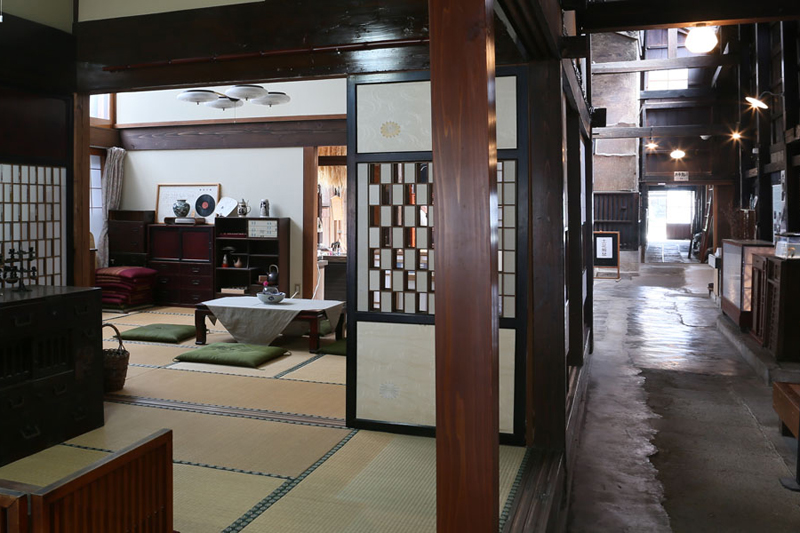
This unique construction is called "built-in" and is said to be common in the Tohoku region, especially in areas with heavy snowfall.
The [built-in] is built following the long, narrow main building and is used as a storage (document storehouse) for property and important ledgers, and as a tatami room where the interior of the storehouse is used as a living space such as a tatami room. The documentary was a common use since the Edo period, and is thought to have been made into a tatami room after the Meiji period.
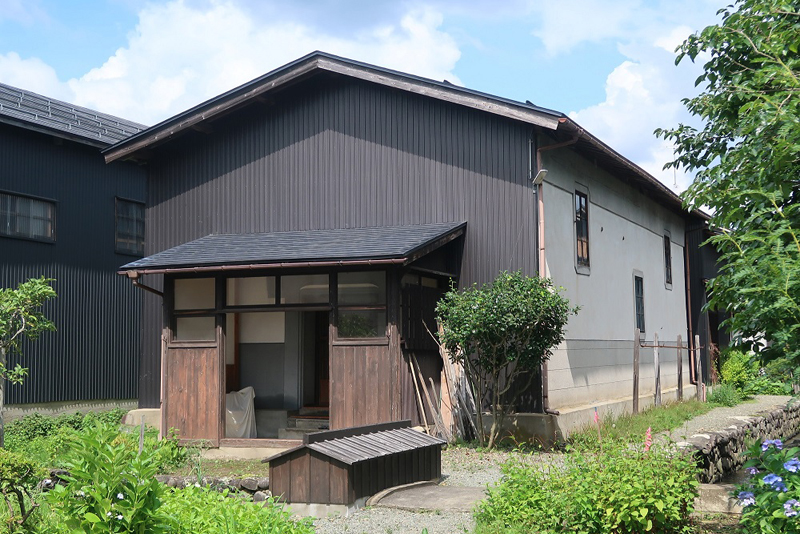
On the other hand, there are also ``outer storehouses'' that are built separately from the main building to be used for brewing sake, miso, etc., or for storage, and some of them are covered with sheaths, making it difficult to notice the existence of the storehouses from the outside. yeah.
Although Masuda Town is lined with merchant houses with built-in warehouses, it has attracted attention as a townscape without storehouses, and has been selected as a nationally important preservation district for groups of traditional buildings.
Masuda developed as a distribution center in the Yokote Basin.
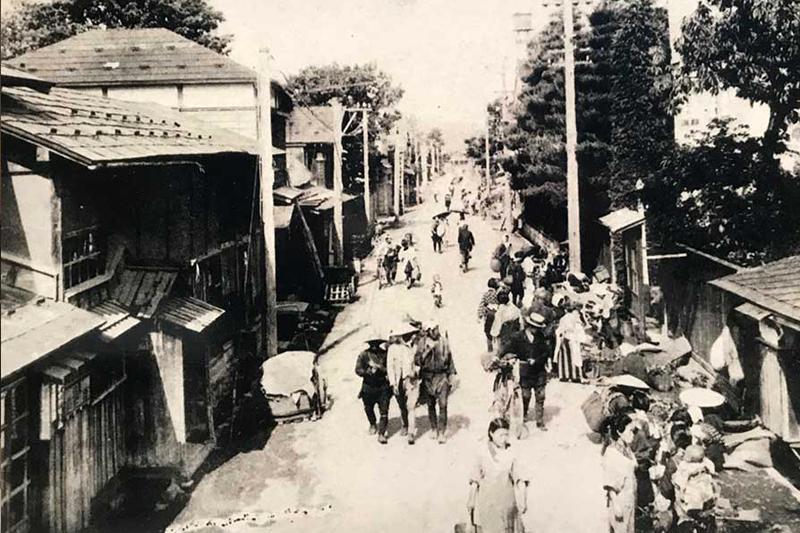
Masuda-cho, Yokote City is located in the southeastern part of the Yokote Basin, at the confluence of the Naruse River and the Minase River, a tributary of the Omonogawa River that flows from Akita City into the Sea of Japan. Although it currently belongs to Yokote City, it was an independent municipality until the Great Heisei Merger.
Since Masuda faces two large rivers that merge with the Omonogawa River, which was responsible for the distribution of the Yokote Basin, it has flourished as a distribution center for the southern part of the Yokote Basin since ancient times.
A market officially recognized by the Akita clan began in the Edo period.
Masuda appears in history after the castle was built by the Onodera clan, a powerful clan that had power in the Dewa Province (Akita and Yamagata) during the Ashikaga period (Nanboku-cho period), and during the Edo period it became the territory of the Akita Domain (Kubota Domain).
Masuda Castle was abandoned during the Edo period due to the shogunate's policy of one castle. The castle town was lost due to the abandoned castle, but it continued to function as a distribution hub and further developed.
In 1643, a morning market officially recognized by the domain began. It is easy to imagine that the morning market was filled with not only agricultural products from the surrounding area, but also goods from the Kubota (Akita City) area that were transported by water on the Omonogawa River. At first, the morning market started in one place, but gradually it became a big market that was held in several places.
During the Meiji period, the volume of transactions reached such a level that a bank was established in the town.
Even in the Meiji period, regular markets began to be held in 1876 (Meiji 9) in Nakamachi (Masuda Nakamachi, Masuda Town) and Nanakamachi (Masuda Nankamachi, Masuda Town), which had been the centers of commercialism since the feudal government.
The amount of transactions for rice, tobacco leaf, raw silk, and other raw silk have increased, and local merchants have also established a bank (later Kitato Bank after Masuda Bank).
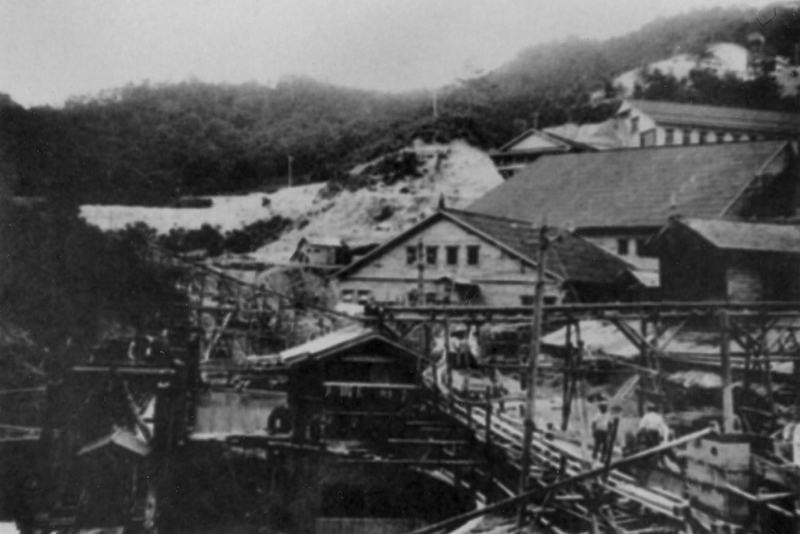
In 1915 (Taisho 4), a large-scale mineral vein was found at Yoshino Mine, a copper and iron mine that was founded in the mid-Edo period, and about 10,000 people involved in the mine were influx into Masuda Town, causing a significant expansion of the city.
The exterior storehouse and unique townscape of Masuda Town, which has its own buildings, was formed during this period.

The Daira Power Plant (Tohoku Energy Hirara Power Plant), which is still in operation in Higashinaruse Village adjacent to Masuda Town, was built in 1918 (Taisho 7) for the Yoshino Mine. It is a large power plant that is still in use today, and it is hard to believe that it was built for this purpose.
With the opening of the Ou Main Line, there was a shift from boat transportation to land transportation.
The basic distribution of Masuda Town was through boat transportation until the Edo period, and land transportation was also popular using the Ushu Kaido and other roads.
However, the opening of the Ou Main Line in 1905 (Meiji 38) was a major turning point. The opening of the railway means the end of boat transportation, and the town centre changes rapidly from the dock to the railway station.
The Great Depression that began around 1929 (Showa 4) began to be a major blow to the production of agricultural products due to cold damage and bad crops.
The Great Depression caused a major crash in raw silk prices, which was Masuda's main industry, and was exhausted by the mining recession after World War I (1914-1918) and the severe production cuts due to the problem of mineral poisoning from Yoshino Mine, and the town ended its role as an economic center, retaining its traditional townscape.
Preservation activities bring back the old townscape
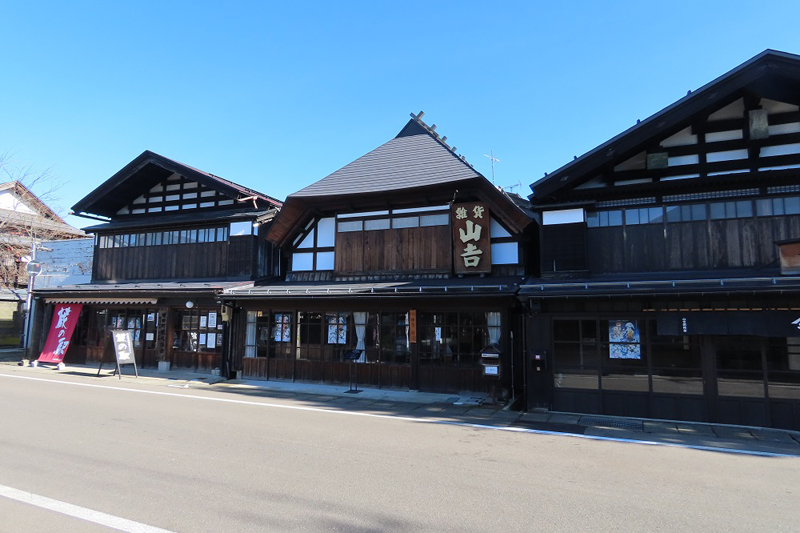
Although Masuda Town still had its old townscape, there were many houses that were demolished or modernly renovated as the town declined.
Therefore, local conservation parties were established, and after the selection of a particularly important traditional building preservation district, a project to restore the renovated buildings has started, and efforts are still being made to restore the townscape from the time when it was thriving.
In addition, new businesses have been attracting new businesses to stores that have become vacant due to business closures, and as of 2019, the number of stores has been increased to 45 stores, compared to the number of stores in 59, and only one completely vacant house has been achieved ("List of Important Traditional Building Preservation Areas" and "Efforts to Preserve and Use of Each District" as of August 2, 2021, Agency for Cultural Affairs).
The interiors of 19 of the historical buildings in Masuda Town (as of April 2023) are open to the public. Here we will introduce some of the most representative buildings.
Former Yukoma Sake Brewery (Shunsai Miso Chaya Kurao/National Registered Tangible Cultural Property)
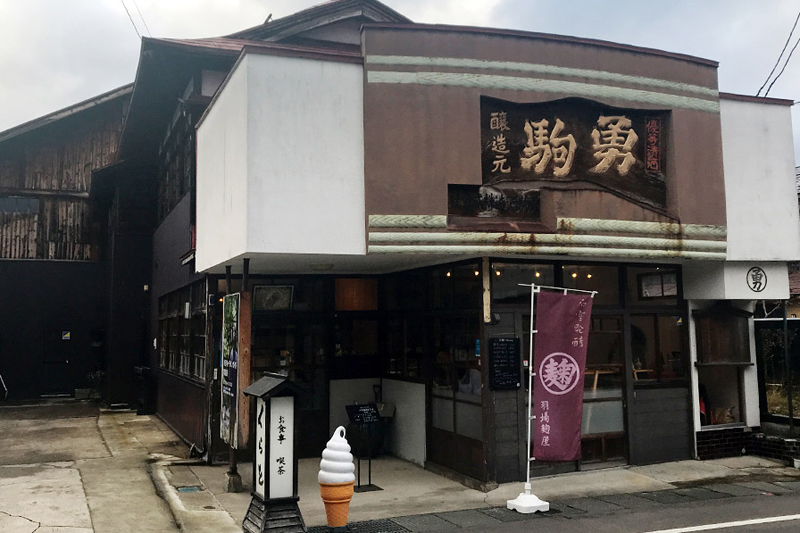
This sake brewery was founded in the middle of the Edo period (1754), and closed down in 2003 (Heisei 15). For a while after it went out of business, it operated as a tourist and product center, but now it is a restaurant called ``Shunsai Miso Chaya Kurao'' and a souvenir shop run by Haba Kojiten, which was founded in 1918 (Taisho 7).
The store's building is unusual in that it has a signboard made of troweled wood that is integrated with the store entrance, and was built during the Taisho era. The brewery in the back (main storehouse) was built at the end of the Edo period and expanded in the early Meiji period, and was used as an external warehouse for brewing sake. The warehouse building is a double structure covered with a sheath.
Seasonal Miso Teaya Kurao <Information>
- Facility name: Shunna Miso Teaya Kurao
- Address: 64 Masuda Nakamachi, Masuda-cho, Yokote City, Akita Prefecture
- Phone number: 0182-45-3710
- Business hours: 10:00-17:00 (lunch 11:30-15:00)
- Closed: Wednesdays and Thursdays
- URL: Shunsai Miso Chaya Kurao
Google Map
Former Ishihira Hardware Store (Tourist Product Center "Kura-no-Eki")
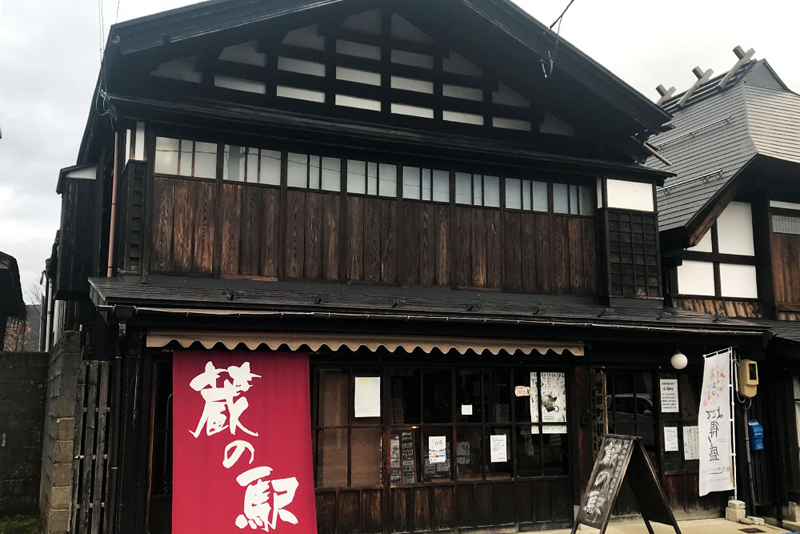
The Ishihira family ran a hardware store during the Meiji and Taisho periods.The building was built between the Meiji and Taisho periods, and is a valuable piece of furniture that still retains its narrow, rectangular merchant house structure. is. The storehouse was a document storehouse. It is also one of the few buildings where the second floor is open to the public.
Currently, Yokote City took over the building from the Ishiheira family, and it is now used as a tourist and product center, ``Kura-no-Eki'', as well as an information center and a product center.
Tourist and Product Center "Kurano Eki" <Information>
- Facility name: Tourism product center “Kura no Eki”
- Location: 103 Masuda Nakamachi, Masuda-cho, Yokote City, Akita Prefecture
- Phone number: 0182-45-5541 (Masuda Town Tourism Association)
- Business hours: 9:00-17:00
- Closed: December 29th to January 3rd
Google Map
Former Koizumi Gohei House (Sato Yosuke Shoten Lacquerware Museum/National Registered Tangible Cultural Property)
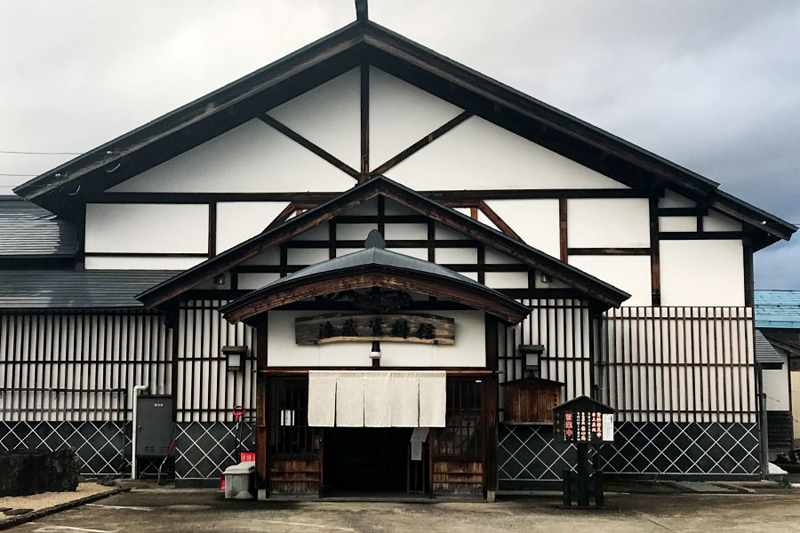
The Sato Yosuke Shoten Lacquerware Museum is the former home of the Koizumi Gohei family, which was acquired by the long-established Inaniwa udon shop Sato Yosuke Shoten and reused as a museum. Currently, it is managed and operated by the Yokote City Masuda Manga Art Museum as a base facility for the Manga Original Art Archive Center, which is a project of the Agency for Cultural Affairs and serves as the point of contact for consultation on the preservation of original manga art in the country.
The former Koizumi family was a large landowner in Masuda, dealing in lumber, miso, soy sauce, and other products. Gohei, the fifth generation head of the Koizumi family, served as the first president of Masuda Bank (Hokuto Bank), which was established in 1895 (Meiji 28).
The built-in building was built in 1921 (Taisho 10) and is very luxurious, as befits a large landowner.
Sato Yosuke Shoten Urushi Store Museum <Information>
- Facility name: Sato Yosuke Shoten Urushi Buraku Museum
- Location: 5 Honmachi Masuda, Yokote City, Akita Prefecture
- Opening hours:
- April-October/10:00-17:00
- November to March/10;00 to 16:00
- Phone number: 0182-23-6915
- Closed: Mondays and Tuesdays
- Free tour
Google Map
Sato Mataroku family (nationally designated important cultural property)
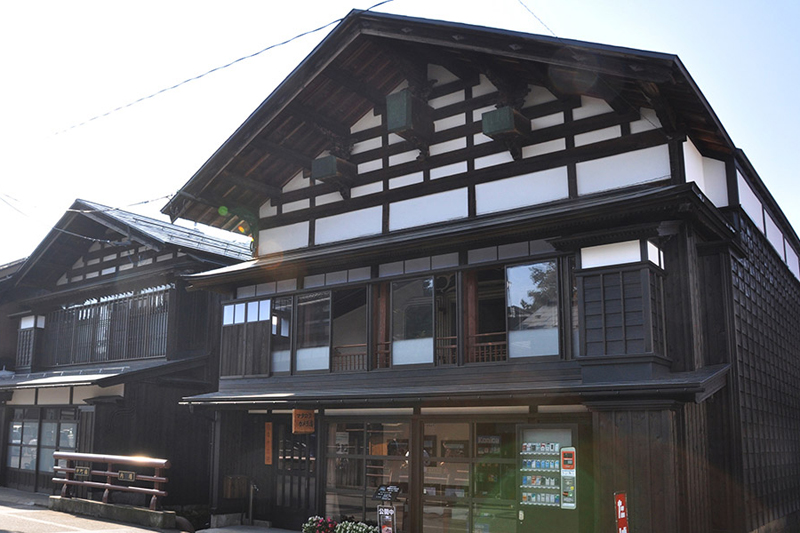
The Sato Mataroku family was a prestigious family that has been around since the Edo period and was one of the founders of Masuda Bank.
The main building looks like a three-story store and residence when viewed from the front, but the outside part that can be seen is a cascading house, and inside it is the main building (built-in building).
At the end of the long main building in the back, there is also a built-in document store (internal) that leads to the main building, and the entire building is a storehouse, and from the outside it is completely unclear that it is a storehouse. The building was built in the early Meiji period and is designated as an important cultural property in the country.
Sato Mataroku Family <Information>
- Facility name: Sato Matarokuya
- Location: 63 Masuda Nakacho, Masuda-cho, Yokote City, Akita Prefecture
- Phone number: 0182-45-5541 (Masuda Town Tourism Association)
Google Map
In addition to the above-mentioned internal organs, which are open to the public in Masuda Town
- Former Ishida Rikichi family (city designated cultural property)
- Takahashi Tea Shop (National Registered Tangible Cultural Property)
- Sato Sanjuro Family (National Registered Tangible Cultural Property)
- Ishinao Shoten (National registered tangible cultural property)
- Tanito family (city designated cultural property)
- Sasahara family
- Yamayoshi Fertilizer Store (City designated cultural property)
- Yamanaka Yoshisuke Shoten (national registered tangible cultural property)
- Sato Konbu Store
- Sato Tasaburo Family (City-designated cultural property)
- Masukawa Shoten (formerly Eisuke Shoten, nationally registered tangible cultural property)
- Formerly Moritokudo Murata Pharmacy (City-designated cultural property)
- Kobunkan Tokairin Bookstore (National Registered Tangible Cultural Property)
- Town Station Fukuzo (formerly Sato Yogobei family)
- Hinomaru Brewing Co., Ltd. (National Registered Tangible Cultural Property)
There are a total of 19.
Request from Yokote City regarding tours of traditional houses
Unlike tourist attraction facilities in other regions, each open house is still home to which the owners live or operate as stores.
We are making the public with the hope that many people will be able to see the cultural heritage that remains in the Masuda area, so please understand the thoughts of the owners before visiting.
Masuda Town Town <Information>
- Phone number: 0182-45-5541 (Masuda Town Tourism Association)
- access:
- Railway: From Yokote Station or Jumonji Station on the JR Ou Main Line, take a route bus bound for Masuda and get off at Masuda Kura Station or Yotsuya Tsukaku Bus Stop, or about 10 minutes by taxi from Jumonji Station.
- By car: Via Akita Expressway Yokote IC, exit Yuzawa Yokote Road Jumonji IC and take National Routes 13 and 342 towards Masuda for about 10 minutes.



![Kitakata, a town of barns with over 4,000 existing barns [Fukushima Prefecture] 4faeb6ac65a3f4f72b36c36a44e8d172](https://jp.neft.asia/wp-content/uploads/2022/09/4faeb6ac65a3f4f72b36c36a44e8d172-150x150.jpg)
![Hot springs gush out in a place where there are no volcanoes! "Yuzawa Geopark" where you can see the mystery of the earth up close [Akita Prefecture] 4550228_m](https://jp.neft.asia/wp-content/uploads/2023/02/4550228_m-150x150.jpg)

![Why are there no virgin beech forests larger than the Shirakami-Sanchi in the world anymore? [Fujisato Town, Aomori Prefecture] Shirakami Mountains, Mount Iwaki in the distance](https://jp.neft.asia/wp-content/uploads/2025/09/0d3ff92f34c42ae905cbae977b5345c3-150x150.jpg)
![The popular game "Matagi" started in Kitaakita City! [Akita Prefecture] matagi](https://jp.neft.asia/wp-content/uploads/2024/04/matagi-150x150.jpg)
![Yurihonjo City, where Honjo, Kameda and Yajima domains were intersected between the Kubota and Shonai domains [Akita Prefecture] FF2C8AAA4350E7E179F97F97B38B3A2302F-1](https://jp.neft.asia/wp-content/uploads/2024/04/ff2c8aaa4350e7e179f97f38b3a2302f-1-150x150.jpg)
![Why do Nama balds take knives to tempt people - Oga Peninsula and the Legend of the Demon (1) [Akita Prefecture] New Year's Eve Event 001 @OGA City](https://jp.neft.asia/wp-content/uploads/2024/10/00bf8a32651033edd1191ba2d04c6f61-150x150.jpg)
![Akita Cedar, which has been close to people's lives since ancient times, is a close look at the reasons and secrets [Akita Prefecture] Ninfu Mizusawa Cedar Rare Population Protection Forest (Noshiro City, Akita Prefecture)_Travel Tohoku](https://jp.neft.asia/wp-content/uploads/2025/05/792bcbe7d9fd514753f4deeaca3de33f-150x150.jpg)
